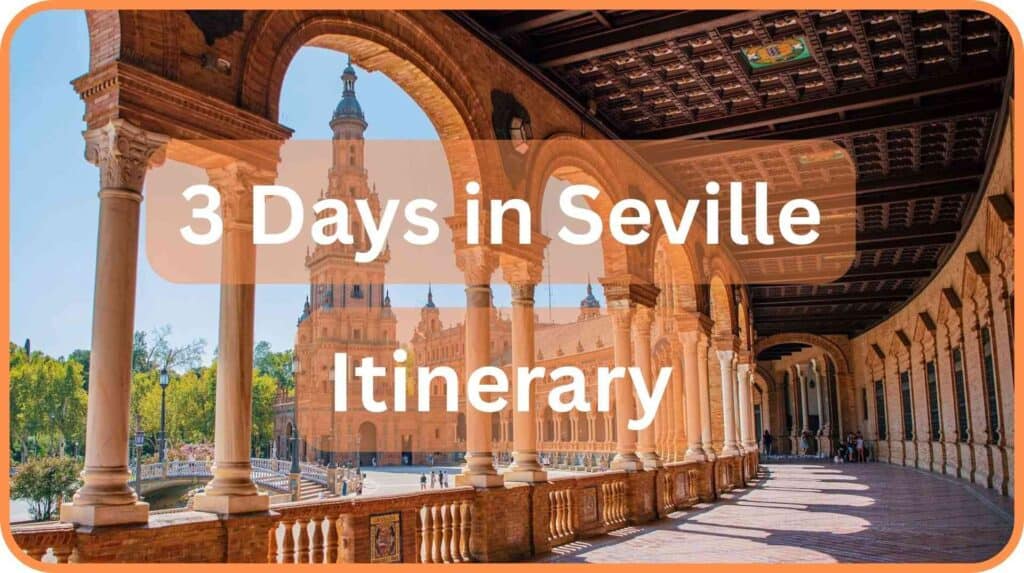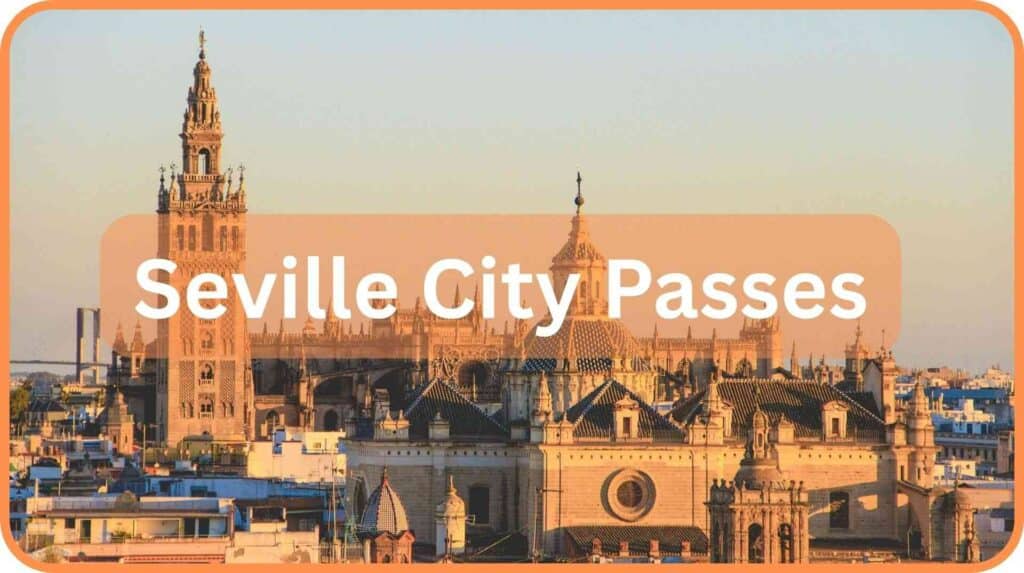Seville Itineraries
Disclaimer
Posts on visit-seville.com may contain affiliate links, meaning we get a small commission if you decide to make a purchase through our links, at no cost to you. Any income earned helps maintain this website and keeps it ad-free.
Seville Metro Guide 2025: Tickets, Times and Map
How to Use the Metro in Seville as a Visitor
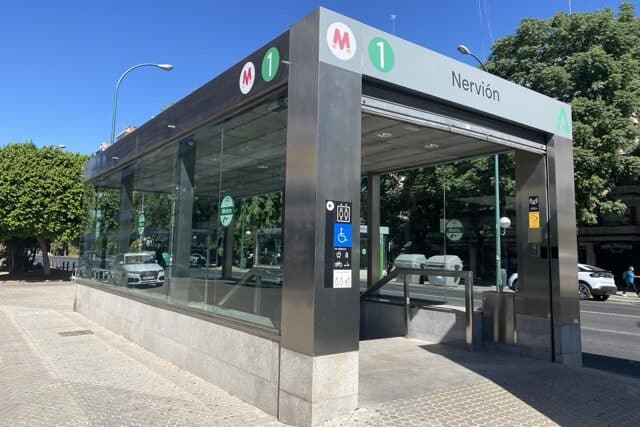
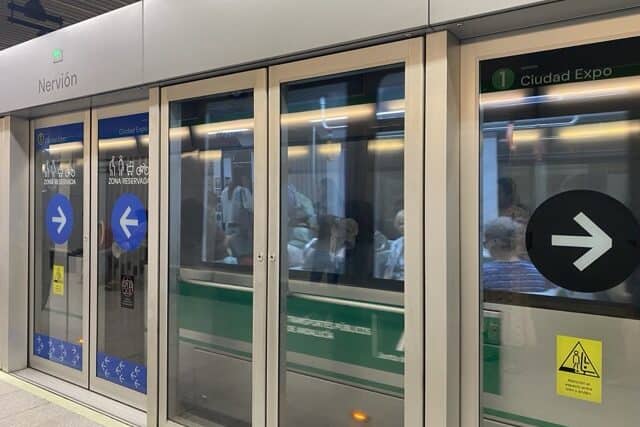
The Seville Metro is an underground subway system, which consist of a singular metro line servicing 21 stations across the centre of Seville. It’s an efficient, cheap, and safe way to travel, especially for daily commuters and anyone staying outside the historic centre.
For visitors, the metro can be useful in certain situations, though it’s less practical for sightseeing since most of Seville’s main attractions are within walking distance or better connected by tram and bus. Still, this guide covers everything you need to know in case you decide to use it during your stay.
Seville Metro – General Information |
|
Route |
Single line (Line 1) from Ciudad Expo (Mairena del Aljarafe) to Olivar de Quintos (Dos Hermanas). (See Seville Metro Route Map) |
Times and Frequency |
Monday to Thursday: 06:30AM – 11:00PM |
Tickets and Prices |
Fares vary depending on the number of zones you travel through and the payment method used. For a full comparison, please see the Seville Metro Ticket Prices table below. |
Seville Metro Operating Times 2025
The Seville Metro operates every day of the week, including public holidays, with longer service hours on weekends and the eve of major holidays.
Operating Hours by Day
- Monday to Thursday: 06:30 – 11:00PM
- Friday and eve of public holidays: 06:30 – 02:00AM
- Saturdays: 07:30 – 02:00AM
- Sundays and public holidays: 07:30 – 11:00PM
Trains generally run every 4–8 minutes during the day and every 15 minutes in the evenings.
During Seville’s major festivals such as Holy Week, the April Fair or Christmas, the metro typically extends its operating hours and increases train frequency to handle larger crowds.
For the latest information and timetables please visit the official Seville Metro website.
Seville Metro Tickets: How to Buy
There are two easy ways to pay for the Seville Metro. The simplest option is to tap your debit or credit card directly at the turnstiles. The system automatically calculates the correct fare based on how many zones you travel through, and you don’t need to buy a paper ticket in advance.
You can also buy a single ticket at the automatic machines in each station. Prices depend on how many “jumps” you make between the metro’s three zones (Section 0, Section 1, and Section 2). A jump simply means crossing from one zone into another. One ticket can be used for more than one person, as long as you purchase the correct number of trips when buying it.
Another option for longer stays is to use a rechargeable Metro Card (BonoMetro), which can be purchased at ticket machines in every station. You load the card with credit (minimum €10) and tap it at the turnstile in the same way as a bank card. The Metro Card gives you slightly cheaper fares compared to buying individual single tickets.
If you expect to make several journeys in a day, the best-value choice is the 1-day unlimited travel ticket (€4.50).
You can check a comparison table below. Please note that from 1 July to 31 December 2025, all tickets and passes (except from single and return tickets) receive a 40% discount as part of a nationwide transport subsidy scheme.
TIP – Tapping your debit/credit card at the turnstiles costs the same as the discounted BonoMetro fare, making it a better option than buying a standard single ticket from the machines.
Seville Metro Ticket Prices 2025
| Ticket Type | 0 Jumps | 1 Jump | 2 Jumps |
|---|---|---|---|
| Single Ticket | €1.35 | €1.60 | €1.80 |
| Contactless (tap at turnstile) – Regular | €0.82 | €1.17 | €1.37 |
| Contactless (tap at turnstile) – with 40% discount, Jul–Dec 2025 | €0.49 | €0.70 | €0.82 |
| Return Ticket | €2.70 | €3.20 | €3.60 |
| BonoMetro – Regular | €0.82 | €1.17 | €1.37 |
| BonoMetro – with 40% discount, Jul–Dec 2025 | €0.49 | €0.70 | €0.82 |
| 1-Day Unlimited Pass | €4.50 (valid for 24 hours, unlimited travel) | ||
TIP – Tapping your bank card costs the same as the BonoMetro fare and both benefit from the 40% discount until December 2025.
Seville Metro Line and Stations
The Seville Metro currently consists of a single line (Line 1) that stretches for around 18 kilometres, running from Ciudad Expo in the west (Mairena del Aljarafe) to Olivar de Quintos in the southeast (Dos Hermanas). Opened in 2009, it connects key neighbourhoods, shopping areas, and university campuses, and is especially useful if you’re staying outside the historic centre.
Below you’ll find the main stations on Line 1, along with nearby attractions worth visiting:
| Zone | Station | Nearby Attractions |
|---|---|---|
| 0 | Ciudad Expo – Cavaleri – San Juan Alto – San Juan Bajo – Blas Infante | Residential areas |
| 1 | Parque de los Príncipes | Parque de los Príncipes park (5 min) |
| 1 | Plaza de Cuba | Torre del Oro (10 min) |
| 1 | Puerta Jerez | Royal Alcázar of Seville (7 min), Seville Cathedral (7 min) |
| 1 | Prado de San Sebastián | María Luisa Park (5 min), Plaza de España (7 min) |
| 1 | San Bernardo | Regional train station, Metro Line 1 transfer |
| 1 | Nervión | Nervión Plaza shopping mall (5 min), Ramón Sánchez Pizjuán Stadium (7 min) |
| 1 | Gran Plaza – 1° de Mayo | Residential area |
| 1 | Amate | Amate Park (5 min) |
| 1 | La Plata – Cocheras | Local neighbourhood stations |
| 1 | Pablo de Olavide | University of Pablo de Olavide campus (5 min) |
| 2 | Condequinto – Montequinto – Europa – Olivar de Quintos | Residential districts, Dos Hermanas |
Below you’ll find the Seville Metro map. Line 1 is colour-coded into three fare zones, which set the cost of your journey depending on how many zones you cross. As the metro currently has only one line, your trip will always be direct with no need to change trains.
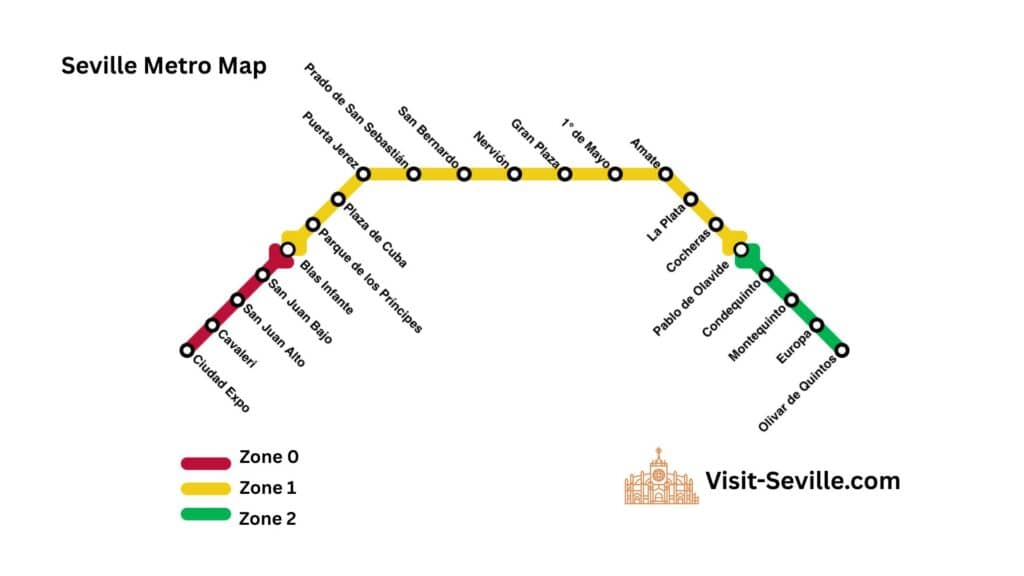
For the latest information on stations and routes please check the Official Seville Metro.
Useful Tips for Riding the Seville Metro
- Announcements & maps: All announcements are in Spanish, but you’ll find clear metro maps on the walls of each carriage and digital screens showing the next stop. On the maps, you might notice the words ‘salto de línea‘, which simply means moving into a new zone.
- Crowded at peak times: The metro is mainly used by commuters, and locals jokingly call it the ‘centímetro‘ (centimetre in English) because of its small size. It can feel crowded at rush hour, so we usually avoid using it then, or instead choose something more comfortable like the Seville Tram.
- Accessibility: All stations are equipped with elevators, which makes the metro step-free. However, as mentioned earlier, trains can get crowded at peak hours, so the experience may feel less comfortable at those times.
- Doors & exits: Just before a stop, a green light above the doors will switch on to show which side will open. This makes it easier to get ready to step out in time.
- Cheaper with contactless: Tapping your bank card at the turnstiles gives you the same reduced fare as the BonoMetro card, and both currently benefit from a 40% discount until December 2025.
- Look for the right turnstile: Not all turnstiles accept contactless. The ones that do have a small card reader device mounted on top, so make sure you head to those if you want to pay by tapping.
- Metro etiquette: In Seville, the metro is still quite new, so the “rules” of big-city underground travel aren’t always followed in the same way as in places like London or Paris. Don’t be surprised if passengers start boarding before everyone has stepped off. If you’re getting off at a busy stop, be prepared to step forward with a bit of confidence to make your way out.
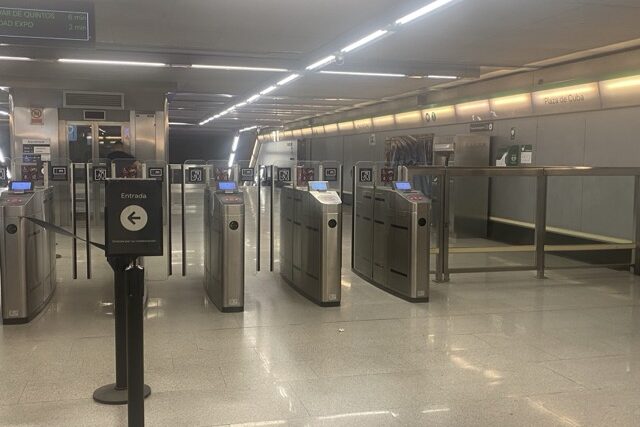
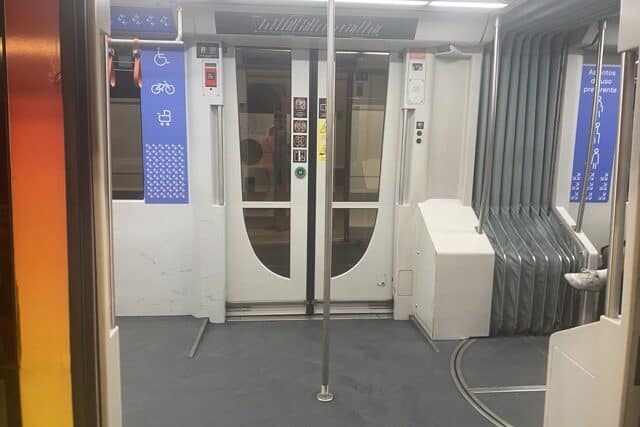
Future Plans for the Seville Metro
Although Seville currently has just one metro line, the network is planned to expand considerably in the coming years. Three new lines are on the table, which together would create a much more complete system for both locals and visitors.
Line 2 is designed to cross Seville from west to east. It will begin in Isla de la Cartuja, cut through the historic centre, pass by Santa Justa train station and the Palace of Congresses, and continue out towards Torreblanca neighbourhood. With 17 planned stations over nearly 13 kilometres, it would provide an important link between Plaza de Armas bus station and the AVE high-speed rail hub at Santa Justa.
Line 3 will run north to south along the left bank of the Guadalquivir River. Starting in Pino Montano, it will serve Macarena, Puerta Osario, Prado de San Sebastián and Plaza de España before reaching Los Bermejales in the south. It will be around 11.5 kilometres long with 17 stations. Construction on the northern section started in 2023, and this part is expected to open around 2030.
Line 4 is planned as a circular route of about 16 kilometres with 19 stations, allowing passengers to transfer easily between Lines 1, 2 and 3. It would connect areas such as Los Remedios, Isla de la Cartuja, Macarena, San Pablo and Virgen del Rocío Hospital, finally linking up with the Reina Mercedes university campus.
Although progress has been slow, the long-term vision is clear, a four-line metro that gives Seville a modern, connected transport system, much more practical for daily commuters and useful for tourists too.
Seville Metro: Frequently Asked Questions
How many metro lines are there in Seville?
Currently, Seville has one metro line (Line 1) that runs from Ciudad Expo (Mairena del Aljarafe) to Olivar de Quintos (Dos Hermanas). However there are plans to expand with additional lines in the future, with some of them already being under construction.
How much does the Seville Metro cost?
A single journey on the Seville Metro normally starts from €1.35, depending on how many zones you travel through. Paying with a rechargeable Bonometro card or by tapping your bank card at the turnstiles is cheaper than buying single paper tickets, and both options currently benefit from a 40% discount.
Is the Seville Metro accessible for wheelchairs and pushchairs?
Yes, all Seville Metro stations are equipped with lifts and wide ticket barriers, making them accessible for wheelchair users and those with push prams. Trains also have dedicated spaces for wheelchairs. However, for visitors, we recommend the Seville tram instead as it’s more spacious, comfortable and more convenient for sightseeing.
More on Visit-Seville
